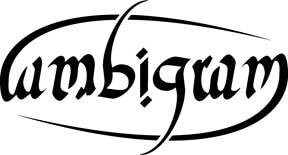This sentence refers to itself. This sentence declares that this blog post is about 2 poems I wrote recently. Both these poems are self-referential to some degree, namely both poems are about poetry. I have been interested in self-reference for along time—and this infatuation is described in greater detail at the end of this post. For now, enjoy the poems.

The first poem is a response to the poem Famous by Naomi Shihab Nye. You may want to read the original before reading my response. Go ahead, click the link above…. [Pause]… Welcome back. Hope you liked the poem. Something clicked in my mind after reading it – and in response I wrote this:
On reading Naomi Shihab Nye
June 10, 2019
Some poets I want to meet
Naomi Shihab Nye, most definitely
She is famous to me
Others, maybe not so much
Their words are stern, less inviting
Their minds, for some reason
Less interesting
But the ones I want to meet
They, they are special
And I want to hear them smile
I have nothing to say to them
As Naomi wrote
They are famous to me
(I am not famous to them)
I have known poets
(My mother, for instance)
Decent but average people
So it is not like I am expecting
Any great wisdom or insight
I just like their words
The jumps, the connections
And I feel like we could be
(could have been)
Friends
As I click the link
And stare obsessively at
The photo on the website
Read between the lines of your bio
Books written awards won
Photos are terrible
So are bios
They tell us nothing
Similar to poetry in that way.
Some days I miss my mother

Here is the next meta-poem. I have been reading a decent amount of poetry recently, mostly courtesy of poetryfoundation.org. This poem has gone through quite a few revisions—and I am sure it will evolve further. But for now here it is.
Poetry does not need
June 18, 2019
Poetry does not need to
Make a point
It just needs to try
(And fail)
That’s all
No more.
Polemics and posturing
Feel good, for sure
Momentarily
Maybe
To scratch an itch
But life’s a bitch,
Doing nothing for the ills
It seeks to cure.
Better by far, for the poem
To just point to something
The warm winter sun
A baby laughing
Graffiti peeling off a wall
And yes, that smile, yes that one.
All relatively
Meaningless,
And yet,
(I must confess),
Meaning so much more.

Note I: These poems were edited on July 15, 2019
Note II: On my infatuation with self-reference
If this is not obvious by now, I love self-reference. I love books with titles like: “What is the name of this book?” or “Break all the rules of graphic design, including this one.” Or statements such as “This sentence no verb.” The last example is from Douglas Hofstadter’s classic Godel Escher Bach: A Eternal Golden Braid. And mentioning Douglas Hofstadter in this post is appropriate because, he, more than anyone else, infected me with the bug of self-reference way back when I was in high-school. He is also responsible for my love of paradoxes, visual wordplay and so much more. [Not to digress, but paradoxes often come along for the ride when we are speaking of self-reference. For instance, just consider the sentence: “This sentence is false” and try figuring out what exactly is going on here. Enough to bend your mind.]
Now, not all self-reference is pathological, by which I mean that most self-referential statements are benign, harmless. Consider “This sentence is in English.” Clearly the sentence is speaking about itself, but there is no inherent problem in that.
This interest in self-reference has, over the years, expressed itself in myriad ways—in my ambigram designs, in silly limericks I have written, many of the stupid jokes I crack (as my friends and colleagues know very well). I mean what could be more self-referential than an ambigram for the word “ambigram.” Form and function deeply connected.

One of the ways self-reference shows up in my work is when I write poetry and this goes back years, as this blog post demonstrates, and of course in the two poems featured in this post.



0 Comments